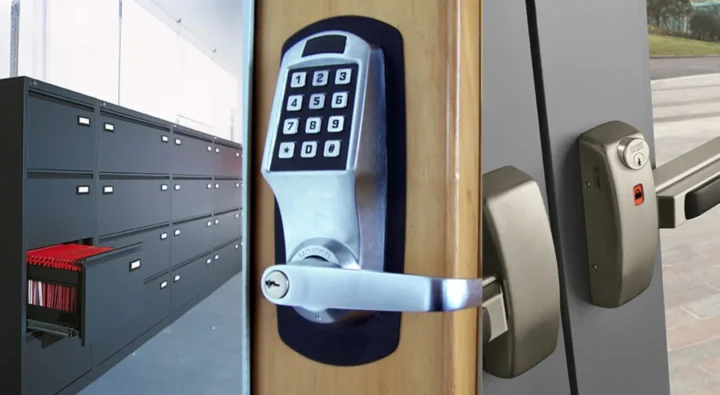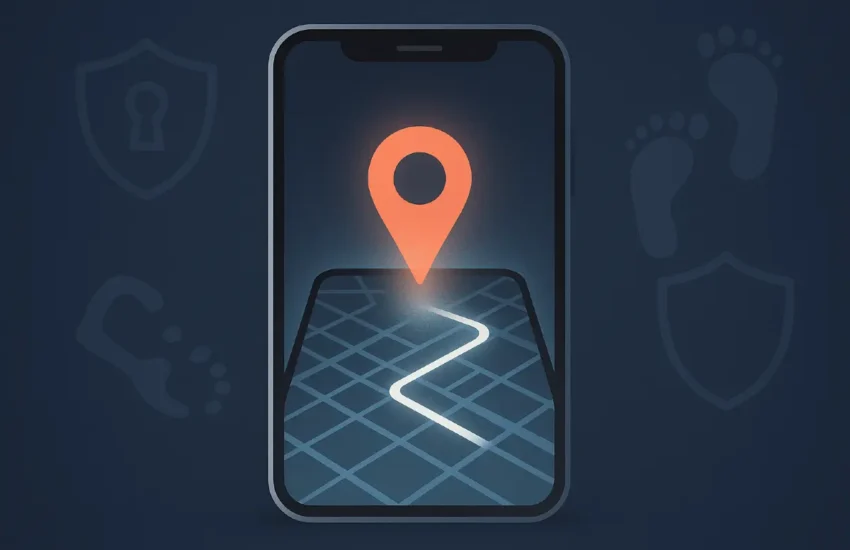Why Your Office Lock Might Be Doing Nothing
Most office doors have a lock. It clicks, it turns, and it gives a feeling that everything inside is safe. But that feeling can be totally wrong. Just because there’s a lock doesn’t mean it’s actually doing anything useful. And that’s where a lot of businesses get caught.
Locks are everywhere in offices—on the front door, storage closets, back exits, even inside desk drawers. But many of those locks aren’t strong enough or smart enough to protect against real threats.

Whether it’s a break-in, an unhappy ex-employee, or just someone who accidentally still has a key, there are a bunch of ways a basic lock can fall short. And when it does, the results can be expensive, stressful, and hard to fix after the fact.
So, why do so many office locks fail—and what can be done about it?
Some Locks Are Way Too Easy to Pick
Most locks in older office buildings—or even in newer places that didn’t put much thought into security—use something called a pin tumbler lock. It’s the same kind of lock that’s been around for over a hundred years. While it might seem fine, it can often be picked open with tools that are easy to find online or even printed from a 3D printer.
Even if no one is trying to pick the lock, there’s another problem: some keys can be copied without anyone knowing. That means if someone loses a key or quits a job without returning it, they could still get back in later. And most of the time, no one notices until something goes missing.
That’s why a lot of businesses turn to a trusted locksmith in Perth who can upgrade their systems to something safer—things like restricted key systems, which can’t be copied at a hardware store, or digital locks that don’t use keys at all.
One Key Problem: Too Many Keys
Here’s something that happens all the time. A business opens up, gives keys to a few employees, and over time those keys get passed around. Someone quits, someone else fills in, someone loses a copy—before long, it’s impossible to know who still has access.
That’s risky. If a key is out there and it opens the main door, it’s basically an open invite for trouble. And if the locks haven’t been changed in years, the problem just gets worse.
Smart businesses now use access control systems instead of physical keys. These can use keycards, fobs, or even phone apps. They also track who enters and when. And if someone leaves the company? Their access can be turned off instantly—no need to chase down a missing key.
Digital Locks: Not Just for Tech Companies
There’s a myth that only big companies or tech startups can afford things like digital locks or smart entry systems. That’s not true anymore. There are digital locks made for small businesses, with simple setups and no monthly fees. They let you skip the keys, manage access from a phone or computer, and get alerts if anything strange happens.
Plus, many digital locks are way harder to break into than the old ones. They’re built with extra safety layers—some even sound alarms if someone tries to mess with them.
So even if an office is small, a digital lock can make a big difference. It’s not just about looking modern—it’s about actually being safer.
What About the Back Door?
Most people think about the front door when they talk about locks. But in a lot of break-ins, the front door isn’t even touched. Instead, thieves go around back or use a side entrance. And those doors? They often have weaker locks—or worse, no lock at all.
If a business has multiple entry points, every single one needs the same level of protection. That includes delivery entrances, emergency exits, and even internal doors that lead to valuable equipment or data.
This is another place where a commercial locksmith can help. They don’t just swap out locks—they look at the whole setup and point out weak spots that might get missed.
Looks Can Be Misleading
Some locks look big and solid from the outside. They might be heavy or shiny or have a long key. But that doesn’t mean they’re actually secure. In fact, some of the cheapest locks on the market are made to look tough, while using cheap parts inside that break easily.
If a lock can be snapped, drilled, or bumped open in under a minute, it’s not doing much good—no matter how fancy it seems. And since most people never test their locks, they don’t find out until it’s too late.
That’s why it’s worth having locks that are rated for commercial use. These are tested against picking, force, and other tricks, so they’re much harder to mess with.
When the Wrong Lock Gets Used
It happens more than most business owners think. Someone installs a residential lock on a commercial door. Maybe it was cheaper, or maybe it just seemed “good enough.” But those locks aren’t made for the wear and tear that comes with daily business use.
Office doors get slammed, pushed, and opened dozens—sometimes hundreds—of times a day. A weak lock won’t hold up for long. And when it breaks, it can leave the whole building unprotected.
Using the right grade of lock is key. Commercial locks are built stronger, last longer, and usually come with better support if anything goes wrong.
Fixing the Problem Before It Gets Expensive
Replacing a few locks or adding a new entry system might sound like an extra cost. But the truth is, it often saves money in the long run. Fixing a security problem after a break-in—dealing with police reports, insurance claims, lost gear, or damaged doors—is way more expensive.
Even just the stress of wondering who has access to the office can be a daily problem for managers and business owners. Getting professional help early on takes that stress away and replaces it with peace of mind.
And that’s not something that comes from just any lock—it comes from knowing it’s the right one.
Here’s What to Remember
A lock isn’t always a lock. Just because a door clicks shut doesn’t mean it’s secure. Old locks, weak systems, or too many copies of a key can make any business easy to break into.
But the good news is, it’s easy to do something about it. Better locks, smart systems, and expert advice are more available than ever. Whether it’s switching to restricted keys, going digital, or just getting a pro to check your setup, small moves can make a big difference.
Don’t wait until something goes wrong. If there’s even a small doubt about the locks at the office, that’s a good sign it’s time for a change.


